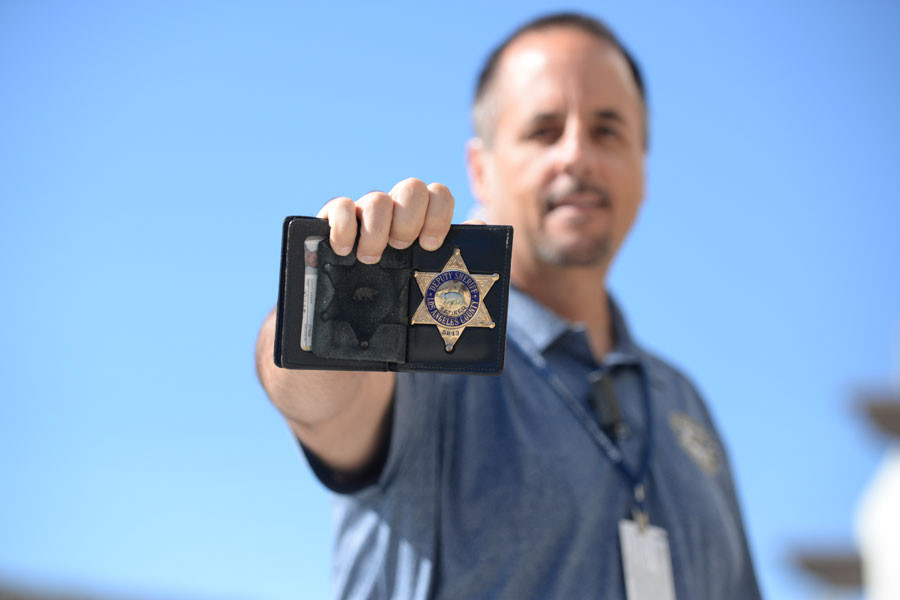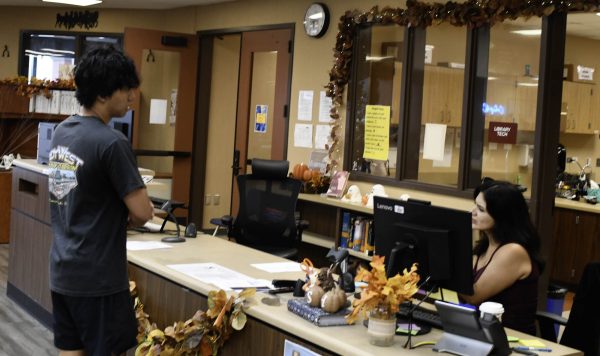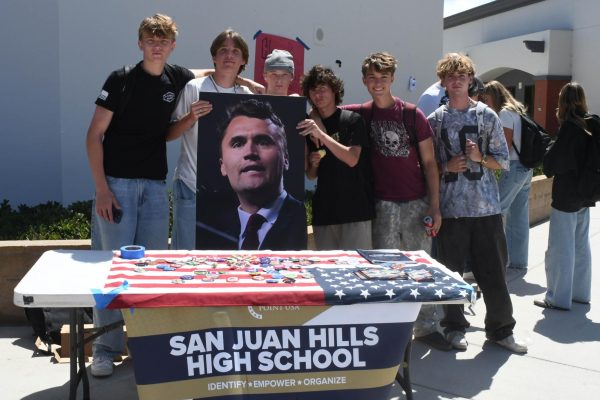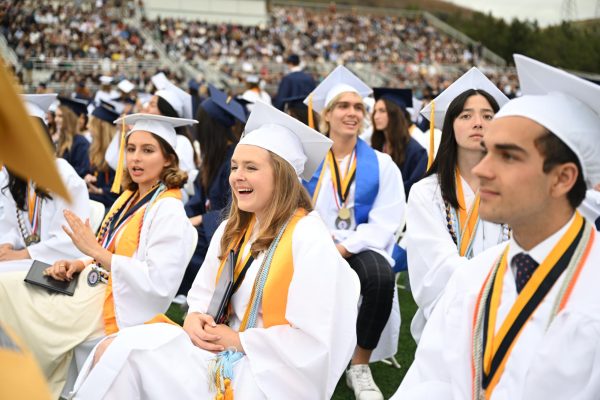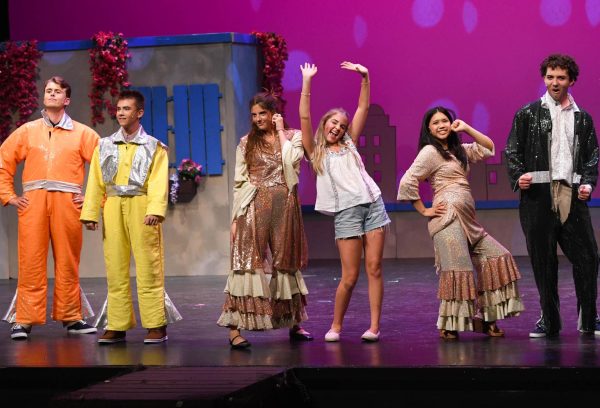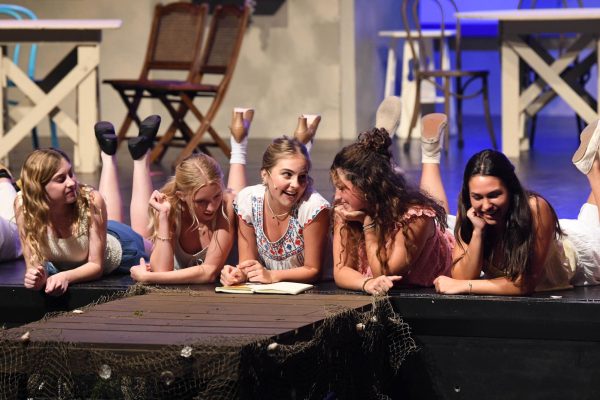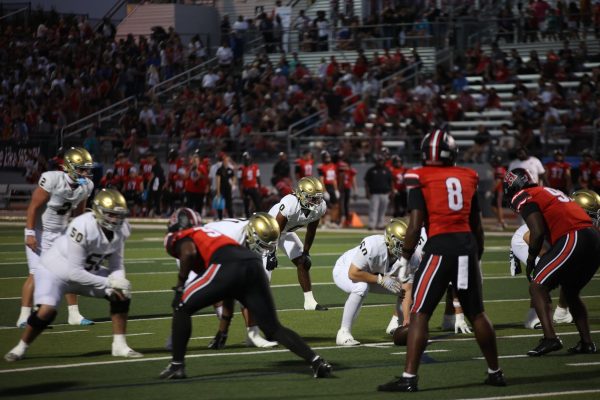SJHHS’s Top Cop Receives Ongoing Training
With recent shootings in Oregon, security at San Juan Hills is a priority for Darrin Jindra. He calls on teachers and students to help.
TOP COP: Darrin Jindra, SJHHS assistant principal, presents badge from his cop days in Los Angeles County. Photo by Kaela Lawson.
Virginia Polytechnic Institute student, Kristina Anderson, woke up April 16, 2007 deciding between open toed sandals and regular shoes. Her decision to wear regular shoes saved her toe that day when a bullet ricocheted off her shoe.
The bullet came from the gun of 23 year old Seung- Hui Cho, another student at Virginia Polytechnic Institute. Anderson was shot a total of three times.
Cho came into Anderson’s engineering class of 18 students and opened fire on them and the professor. Anderson was one of seven survivors from the class.
The 2007 shooting left a total of thirty two students and professors dead, thirty three including the shooter.
“Riveting story, you could hear a pin drop on the carpet in that room,” said Darrin Jindra, assistant principal of discipline at SJHHS, who attended a school safety conference on October 20 in Anaheim put on by the Sheriff’s Department.
Anderson went on to found the Koshka Foundation for Safe Schools and spoke at the event along with the OC Sheriffs’ about the shooting and the importance of being prepared for emergencies and remaining safe while in school.
The conference was sponsored by an Orange County Hospital, the Koshka Foundation, and the OC Sheriff’s Department; and was attended by FBI agents.
Jindra, who spent twelve years as a deputy in the Los Angeles County Sheriff’s Department, now focuses his attention on school safety at SJHHS.
“Just because of that training and those life experiences I can continue to talk to staff and share so they know that I’m for real,” said Jindra.
Two years ago, at a staff meeting that emphasized shooter on campus protocol, Jindra had a simple question for the staff: have they ever heard a real gunshot before? Unknown to staff at the time, Jindra had a SWAT team member in the library hallway who fired blanks at that moment. The purpose of the exercise was to help teachers become prepared in case they heard that sound on campus if a shooter were present.
Currently there is a plan in place if a shooter were to enter campus. It follows the acronym: D.E.E. Which stands for: deny access, evade, and engage.
“If something happens, you want deny access: pull the lock-blocks (devices that lock classroom doors), put some shades down, barricade the door, put up some obstacles. If that doesn’t work, shooter is right there, you don’t have time to block the door, you have to start to evade: can we leave? can we escape? We’ll get out of here, we’ll go to the library or somewhere. Then that last ditch, that last thing is to engage. We couldn’t stop him from getting in, we couldn’t get out, we’re going to have to kick his ass, throw stuff at him, anything. They aren’t expecting that,” Jindra explained.
He strongly recommends teachers and students discuss how they would react to a shooter on campus.
“That’s the only thing I really want to change, is trying to get messages out to our teachers about still having that conversation in class,” states Jindra.
Spending ten out of twelve years on patrol in the L.A. County area, Jindra has experience with shooters. Specifically, he and his partner noticed a vehicle make a turn that looked like one a drunk driver might make coming off a highway. So they ran the vehicle’s licence plate number and discovered that it had also been charged with a felony.
It escalated into a pursuit, and Jindra and his partner were shot at during the chase. When the car turned into a mall with no outlet, Jindra exited his vehicle prepared to confront the offender and discovered that the man had shot himself. He later found that the felony charge under the man’s license plate had been for fatally shooting his wife and son.
Experiences like this one help Jindra develop D.E.E. further in the student and staff body.
The discussion that Jindra feels is necessary in classrooms will help students and teachers mentally prepare for multiple situations that might occur on campus. He hopes it will ensure a safe feeling on SJHHS campus, and an understanding of being ready for a disaster.
“Being in law enforcement and loving kids and loving people has helped me, I feel lucky that I’ve been through those moments so I can share it with people here,” concluded Jindra.
These techniques will be executed in an upcoming drill.
Your donation will support the student journalists of San Juan Hills High School. Your contribution will allow us to cover our annual professional memberships as well as equipment and other costs associated with bringing you high quality student journalism.
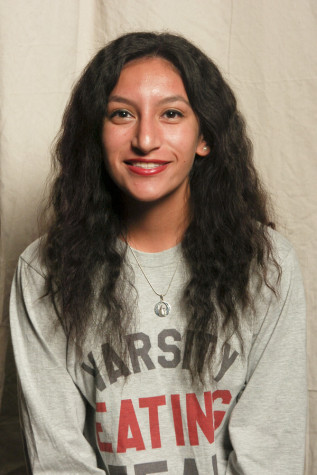
Kaela Lawson is not a very interesting person. As the senior news editor, and a senior in highschool, she is supposed to be responsible and wise and...

